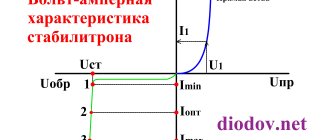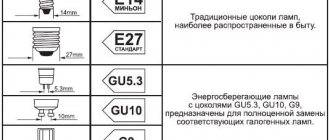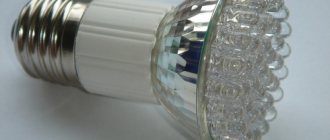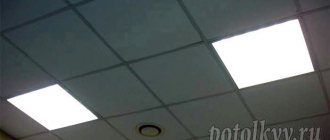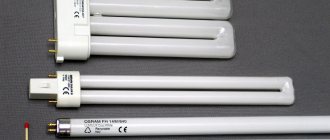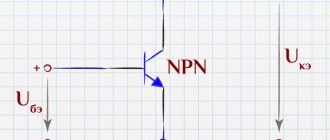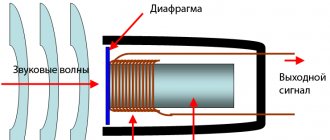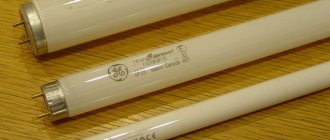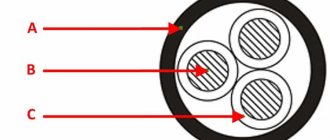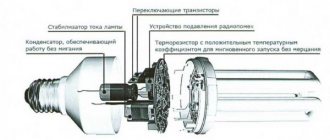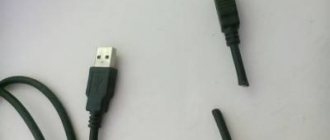Low-pressure fluorescent gas-discharge lamps are one of the types of lighting energy-saving light sources that contain mercury particles. The main advantage of such lamps is their ability to significantly save on energy consumption compared to conventional lamps. At the same time, they have greater light output than traditional ones.
Perhaps in the near future, energy-saving lighting sources will forever supplant their relatives, which is confirmed by the monitoring of the demand for incandescent lamps of this type. The photo shows some types of fluorescent lamps.
But in addition to fluorescent lamps, LED sources are also quite popular. Therefore, when choosing lamps, it is worth having some information about these two types, what are their differences, advantages and disadvantages, what features you need to pay attention to.
Let’s try to figure this out so that when purchasing fluorescent lamps, we can apply our knowledge in practice.
What is a fluorescent lamp
The low efficiency of traditional incandescent lamps has long been a headache for electrical equipment manufacturers. The problem of saving energy became more and more urgent and in 1936 a solution was proposed. In Russia, special gas-discharge devices have appeared that can combine lighting with energy savings.
A fluorescent lamp is a structure made from a bulb with electrodes placed inside. The shape can be any; operation is affected only by the gas composition. After applying voltage between the electrodes, the process of electron emission starts, which creates radiation.
Figure 1. Fluorescent light source
However, the radiation received at this stage is in the ultraviolet range and is not visible to the human eye. To make the light visible, the top of the bulb is coated with a special compound - a phosphor.
Inside the flask there is an inert gas or mercury vapor to maintain a glow discharge between the electrodes. Inert gas is a safe option because it does not interact with the surrounding space in any way. But devices with mercury vapor are extremely dangerous. Devices with such contents must be disposed of according to all rules, and care must be taken when handling flasks.
Why do people miss the sun?
According to meteorologists, the number of sunny days in Belarus ranges from 20 to 35 per year. The rest of the time people have to do without sunlight. Let's try to imagine an ordinary autumn or winter day: a person gets up in the morning when it is still dark outside the window. On his way to work, he has to turn on the headlights in his car because the sun hasn't risen yet. Throughout the short daylight hours a person works, solving many issues. And on the way home, you again have to peer into the dark road, because it’s already dark again.
It turns out that even on clear days a person and the sun practically never meet. Meanwhile, a lack of sunlight leads to serious consequences and health problems, both physical and mental.
Types of fluorescent lamps
All fluorescent lamps are usually divided into two large groups: high and low pressure devices.
High pressure devices are often used in street lamps. They are capable of producing a strong luminous flux, but the color rendering parameters are at a low level. On sale you can find lamps with different levels of light output and shades of glow. They are used for powerful lighting, as decorative lighting for buildings.
Figure 2. Types of LL
Low pressure LL is more common. They are widely used in everyday life and in production. Most often, the models look like small cylinders. Such electrical appliances have ballasts that reduce the pulsation coefficient and make the glow more uniform. The component is a small circuit housed in the base of a light bulb.
Markings and sizes
Each LL has its own technical characteristics that determine its use. Typically, all information about the device is encrypted in the labeling.
The designation begins with the letter L, which means lamp. Then comes the letter designation of the shade.
| Marking | Meaning |
| D | day glow |
| B | White light |
| HB | cool white |
| TB | warm white |
| E | natural light |
| HE | cool natural light |
| G, K, Z, F, R | various shades depending on the type of gas used and the phosphor used |
Sometimes in the marking you can find the designation Ts or TsTs, which indicates improved color rendering of the phosphor. For example, the designation LDC is typical for a fluorescent lamp with improved color rendering.
This is followed by digital designations that comply with global standards. These are three numbers, the first of which determines the quality of color rendering, and the rest indicate a specific color temperature. The larger the first number, the better the color rendering. An increase in the remaining numbers indicates a cooler glow.
Figure 3. Types of LL base
LL devices vary in size. The dimensions are indicated by the designation “TX”, where X is a specific size parameter. Specifically, T5 means 5/8 inch in diameter, and T8 means 8/8 inch in diameter.
The sockets can be pin or threaded. In the first case, the designation looks like G23, G24, G27 or G53. The number indicates the distance between the pins. Threaded sockets are available with markings E14, E27 and E40. Here the number determines the thread diameter.
Additionally, the lamp indicates the supply voltage and startup method. If the box has the designation RS, it means that no additional equipment is required for operation. All the necessary elements are already built into the base.
Power and spectrum
In order for the lighting source to work normally, it must be connected to a 220 V network with a frequency of 50 Hz. Deviation may negatively affect the stability of lighting, significantly shortening the service life.
Voltage fluctuations can change the power of an electrical appliance, reducing its efficiency. Even the most powerful lamp will glow dimly if there is insufficient voltage.
Must watch: a ban on fluorescent lamps will come into force in 2022.
Modern LLs have almost any shade. The color temperature spectrum varies from classic warm to daylight. Each lamp is marked accordingly by shade.
Separately, it is worth considering lighting devices with ultraviolet glow. They are marked LUF, while reflective blue devices are marked LSR. UV lamps are used for bactericidal treatment of premises.
Most fluorescent lamps produce a flux similar in length to ordinary sunlight. You can see the similarities between the spectra in the picture below.
Figure 4. Comparison of the spectrum of sunlight and LL
The spectrum of sunlight is shown on the left; the spectrum of a high-quality fluorescent lamp is shown on the right. The light from the sun has a more even characteristic, but the similarities are definitely there. LL has a pronounced peak in the green region, while in the red region there is a decrease.
It has been scientifically proven that the closer the light from an artificial source is to natural light, the better it is for health. For this reason, fluorescent lamps are preferable to LED fixtures.
Starting equipment
Any types of gas discharge lamps cannot be directly connected to the electrical network. When cold, they have a high level of resistance and require a high voltage pulse to create a discharge. After a discharge appears in the lighting device, a resistance with a negative value appears. To compensate for it, you cannot do it by simply turning on a resistance in the circuit. This will lead to a short circuit and failure of the light source.
To overcome energy dependence, ballasts or ballasts are used together with fluorescent lamps.
From the very beginning and to this day, electromagnetic type devices – EM ballasts – have been used in luminaires. The basis of the device is a choke with inductive reactance. It is connected together with the starter, which provides turning on and off. A capacitor with a high capacitance is connected in parallel. It creates a resonant circuit, with the help of which a long pulse is formed that lights the lamp.
A significant disadvantage of such ballast is the high power consumption of the inductor. In some cases, the operation of the device is accompanied by an unpleasant hum, and pulsation of fluorescent lamps occurs, which negatively affects vision. This equipment is large in size and has significant weight. It may not start at sub-zero temperatures.
All negative manifestations, including pulsations of fluorescent lamps, were overcome with the advent of electronic ballast - electronic ballasts. Instead of bulky components, compact microcircuits based on diodes and transistors are used here, which makes it possible to significantly reduce their weight. This device also provides the lamp with electric current, bringing its parameters to the desired values, reducing the difference in consumption. The required voltage is created, the frequency of which differs from the network one and is 50-60 Hz.
In some areas, the frequency reaches 25-130 kHz, which eliminated blinking, which negatively affects vision, and reduced the pulsation coefficient. The electrodes are heated up in a short period of time, after which the lamp immediately lights up. The use of electronic ballasts significantly increases the shelf life and normal operation of fluorescent light sources.
In what areas are they used?
With the help of fluorescent lamps, large areas can be effectively illuminated, while significantly improving indoor conditions, reducing energy costs, and also increasing the service life of the lighting system.
Devices with built-in electronic ballast and E27 or E14 screw threaded sockets are used in everyday life as an effective replacement for incandescent lamps. They are able to provide the necessary luminous flux, guarantee stability and absence of flicker. At the same time, there is no hum at all. They are used in apartments, houses, shopping centers, schools, hospitals, banks, etc.
Figure 5. LL in the interior
Specifications
The technical characteristics of a particular lighting device are encoded in the labeling and indicated on the packaging. This is information about the lamp power, base type, size, color temperature, service life.
Most modern fluorescent devices can operate for 8-12 thousand hours. The indicator depends on the type and size of the device.
Efficiency is expressed as 80 Lm/W, which is significantly more than traditional incandescent lamps. During operation, a moderate amount of heat is generated; the devices are resistant to wind and can operate stably at temperatures from +5 to +55 °C. If a heat-resistant coating is present, the device can be used at +60 °C.
Figure 6. Specifications
The color temperature is usually from 2700 to 6000 K. The efficiency can reach 75%.
Comparison with other light sources
LL-type products differ significantly from both aging incandescent lamps and progressive LED lamps.
Compared to the first ones, they consume 5 times less electricity, while providing the same level of light flux saturation. But they are somewhat inferior to LED devices in terms of power combined with energy consumption.
The table clearly shows in numbers how much more profitable it is to use more modern sources of high-quality lighting instead of traditional Edison light bulbs
True, an incandescent lamp burns with the same intensity throughout its entire operating period, while fluorescent lamps lose some of their saturation due to the burnout of the inner layer that reflects ultraviolet light.
LED products become somewhat dim during operation due to degradation of the working diodes. And in some models it is possible to adjust the brightness of the lighting using a dimmer.
Incandescent or fluorescent lamps do not provide this function. But this convenient mode in LED devices is not free and you will have to pay an additional amount for it.
In terms of the level of structural fragility, incandescent lamps and fluorescent lamps are similar, since they have a glass bulb. In this regard, ice modules are more resistant to shock and mechanical damage. And the absence of any harmful or toxic elements inside makes them much more attractive for use at home.
The highest costs for the entire operating period are incurred by the use of incandescent lamps. Luminescents consume energy within reasonable limits, and LEDs make it possible to reduce costs to the very minimum.
As for the financial side, initially an incandescent light bulb costs less than others. However, given its working life of only 1,000 hours, this can hardly be considered a pronounced advantage.
The basic price of fluorescents is higher, however, and they last much longer. As reputable manufacturers say, they last for 10,000-15,000 hours if the number of daily activations does not exceed 5-6 times.
LED modules can boast even better performance, but you will also have to pay much more for this pleasure, and this is not advisable in all cases. Although the tendency to replace some light sources with others can be seen everywhere. We wrote about the need to replace fluorescent light bulbs with LED ones and the procedure for performing this work here.
How the lamp works
The operating principle of any fluorescent lamp involves applying voltage to the electrodes located inside the bulb. A glow discharge occurs between the electrodes, which is supported by an inert gas or mercury vapor located inside the flask.
Figure 7. Operating principle
The glow discharge generates radiation in the ultraviolet range, which, through a phosphor applied to the flask, is converted into visible light of the desired shade.
To produce ultraviolet radiation, gas-discharge lamps are used. Ordinary glass does not transmit ultraviolet radiation, so special quartz glass is used to make the flask. There is no phosphor coating in this case. The devices are widely used in solariums and for disinfecting premises.
Features of ceiling devices
The main purpose of their use is to ensure the organization of general lighting. Most often, these varieties are used in industrial and office premises.
Depending on the number of built-in lamps, they are usually divided into four-lamp and two-lamp.
Why do you need a choke in a fluorescent lamp?
The standard connection diagram for a fluorescent lamp includes the light source itself, a starter and a choke.
The inductor is an inductor with a plate core. It plays the role of a ballast, stabilizing the voltage and preventing the lamp from quickly becoming unusable.
When turned on, the starter receives a significant voltage, several times higher than that required for the lamp. The choke reduces this voltage and only then supplies it to the contacts of the lighting device.
Figure 8. Connection diagram of the inductor to the lamp
The circuit can be supplemented with a capacitor connected in parallel to the power supply, which significantly improves system stability, extends service life and reduces flicker.
Where does winter depression come from?
It is believed that gloomy, cloudy weather contributes to a deterioration in mood and a decrease in emotional background. In fact, winter depression is often a consequence of a lack of the same vitamin D. The fact is that it is involved in the process of hormone synthesis, and its lack creates problems with the production of dopamine, which is called the “happiness hormone.”
A lack of vitamin D can lead to completely unexpected consequences, for example, obesity and eating disorders. This happens through the same mechanism as the development of depression. Many people tend to “eat up” a bad mood, extra pounds gradually accumulate, this causes dissatisfaction with themselves and a new raid on the refrigerator. It turns out to be a vicious circle that can easily lead to bulimia or anorexia. There is even a concept of seasonal affective disorder - depression caused by a lack of sunlight.
How to choose the right one
When choosing a fluorescent lamp, you need to pay attention to:
- temperature conditions of use;
- voltage;
- size;
- luminous flux strength;
- lighting temperature.
Devices with a threaded base and minimal flicker are effective in everyday life.
Figure 9. When purchasing, pay attention to the size of the base
Hallways need strong lighting, so choose lamps with an intense luminous flux. But in the bedroom or living room, compact devices with soft, dim light are appropriate.
In the kitchen it is better to use multi-level lighting, including general and local appliances. It is advisable to select warm shades with a power of at least 20 W.
It will be useful to read: Choosing fluorescent lamps for plants.
Lamp disposal
Fluorescent lamps contain substances harmful to the environment, so waste disposal must be handled as responsibly as possible.
One lamp can contain about 70 mg of mercury, which is quite dangerous. However, there are a lot of similar lamps in landfills, this is a serious problem.
If mercury enters the human or animal body, it quickly provokes poisoning. Storing faulty lamps in the house for a long time is prohibited due to the likelihood of mechanical damage to the bulb with subsequent leakage of harmful substances.
Figure 10. Designation of the place where disposal of devices is permitted
Disposal of devices:
- All lamps are collected and stored in special containers.
- Using a press, the devices are crushed.
- The resulting crumbs are sent to the heat treatment chamber.
- Harmful substances enter the filter, where they remain.
Sometimes gases are exposed to liquid nitrogen and become solid. The resulting mercury is reused.
